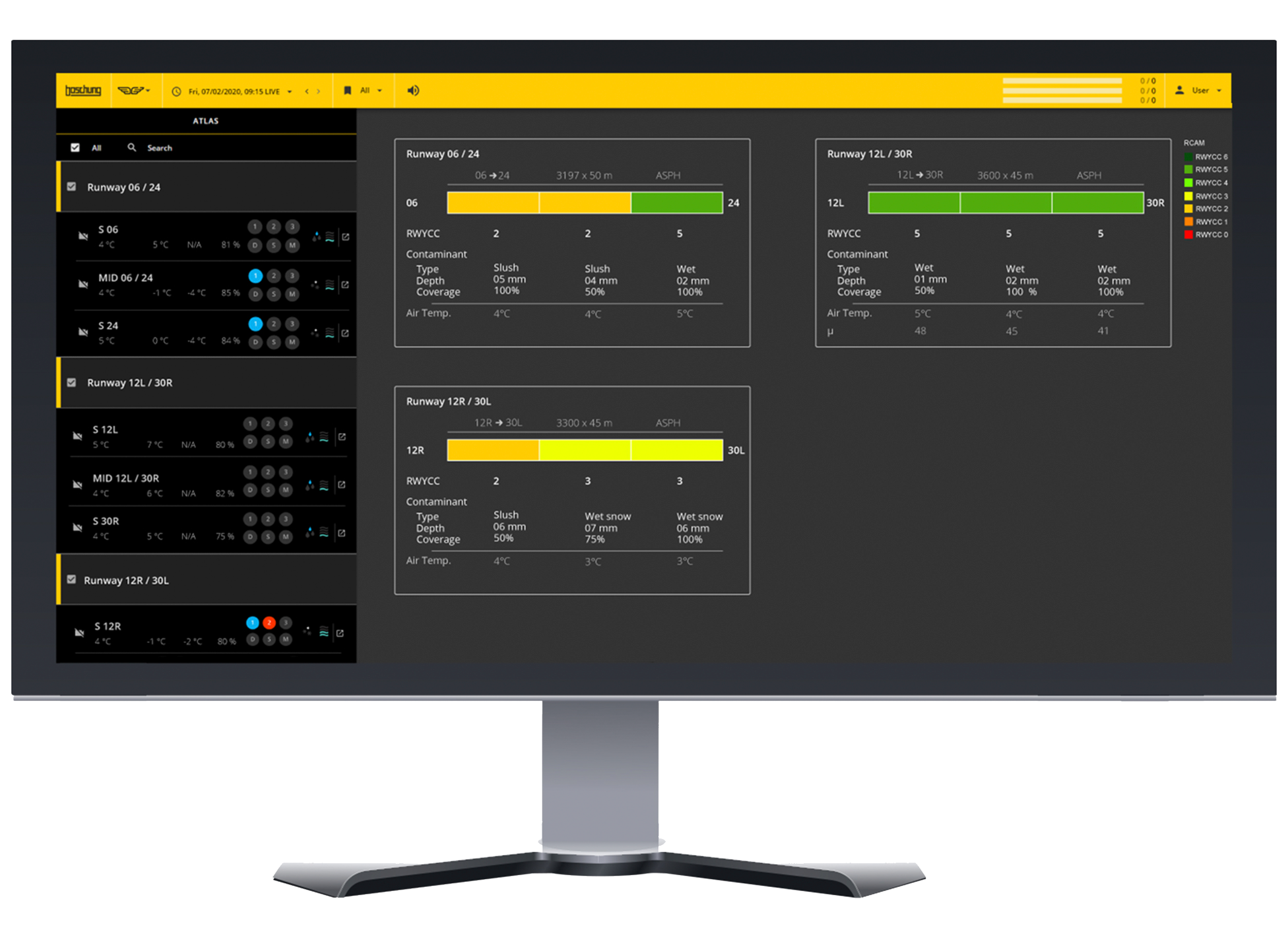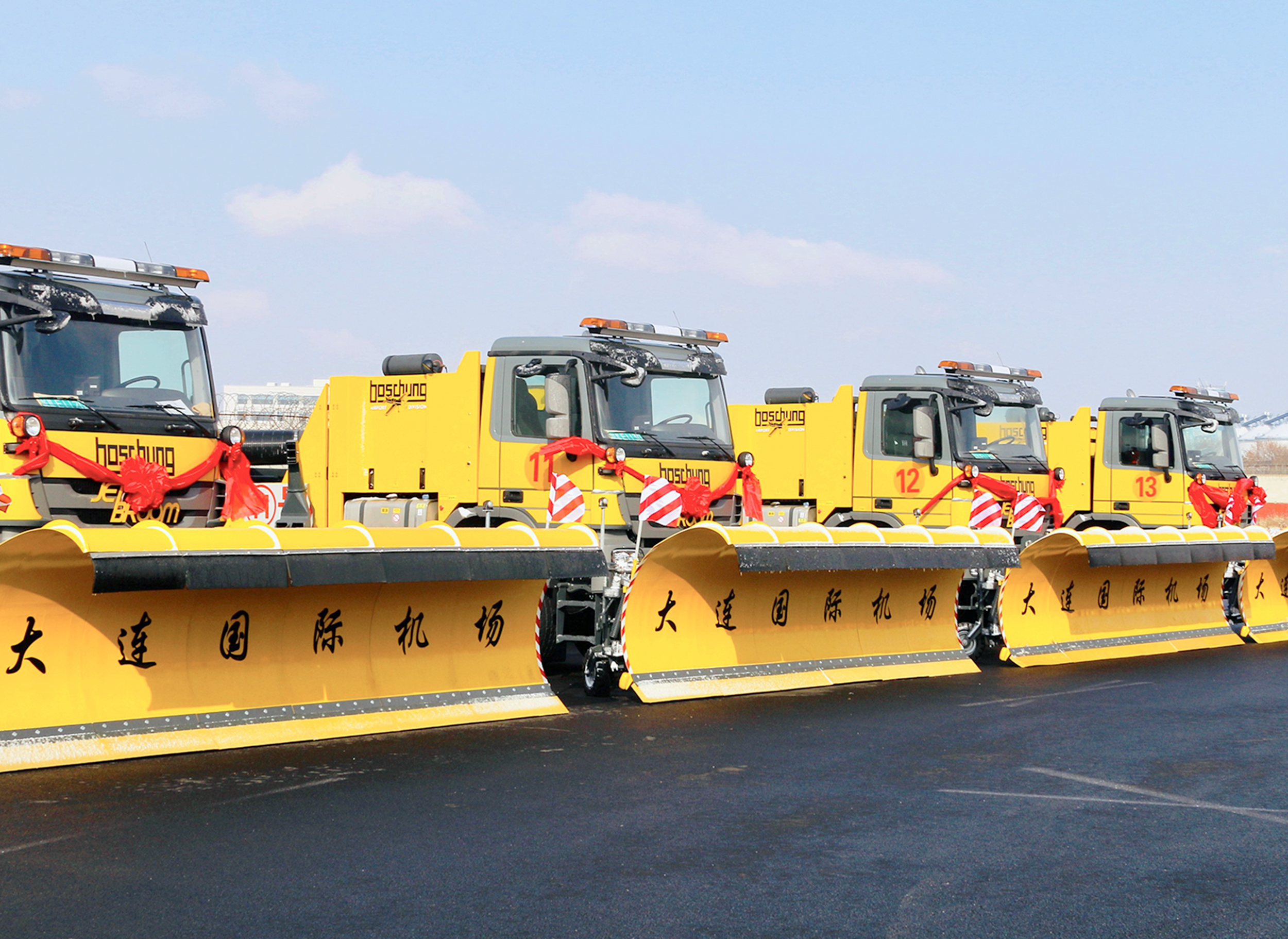
Summertime and ice early-warning systems? Weird combination indeed, but with concrete applications!
"Summertime and ice early-warning systems? Weird combination indeed, but with concrete applications!"
By Dr. Arnaud Varé, Head of Sales at Boschung Mecatronic AG
As the name implies, an ice early-warning system is useful when temperatures go down below 0° C (32°F) and water starts to freeze. Preventing in advance the formation of ice on the pavement with such a system presents huge advantages in the wintertime. However, such installations can also provide valuable information in the summer, supporting maintenance operations against risks present on roads or runways.
Ice early-warning system for anticipated detection of freezing point temperature
An ice early-warning system is the integration of several sensors into a computing unit, providing information about the state of the road.
The Boschung newest generation of ice early-warning systems, RCM500-NT, includes atmospheric sensors for measurements of air temperature, relative humidity, dew point, precipitation type and quantity, as well as visibility (all provided by the modular all-in-one sensor called "r-weather") and for the measurement of wind speed and wind direction. Besides, passive sensors built in the pavement provide data of pavement temperature and state (dry, humid, wet, snow, frost, ice) and water film thickness. Active pavement sensors measure with anticipation and with the highest accuracy the freezing point temperatures by cooling down the water film on the surface of the sensor.
The mix of all measurements is sent as data packages to be visualized on a screen by a winter maintenance operator. Boschung offers the management software BORRMA, as well as smartphone app named RWIS. Once road and atmospheric parameters reach certain conditions, alarms are triggered so that the operator can take the right action just in time at the right place. By especially receiving alarms before pavement freezes (independently of the de- icing agent), operators have time to take decisions and can prevent from unnecessary de-icing operations.
There are risks due to pavement conditions for road users all year long
While ice is obviously the main risk for traffic on roads or for take-off/landing on runways in the winter, other risks are present on roads or runways during the other seasons. Such risks, namely heat on the pavement and water, can also be displayed by the system.
Increasing ground temperature: In case of heat, ground temperature can easily increase above 50° C (122° F), which is the limit for certain types of road materials to start melting. To reduce the effect of such processes, one way is to decrease the speed limit for the traffic. The ice-early warning system (that we can call here "road weather information system") can automatically export data to any intelligent transportation system with variable messages (VMS) to change the speed limit. This can be triggered by a customer-specific alarm.
Another application in a period of heat concerns the monitoring of the road during construction works. Knowing the pavement temperature next to a construction site can for example provide valuable information if specific material has to be applied on the road at specific temperatures – in case the material will melt after its application or will dry too quickly. Getting historical data from the BORRMA management software also support the establishment of protocols of construction works.
Excessive water: Water can be extremely dangerous for the traffic. In case of rain, speed limit can also be adapted automatically, in order to especially avoid the risk of aquaplaning. The information provided by the road weather information systems is the presence and intensity of rain (atmospheric sensors) and the water film thickness (pavement sensor). The latter value can be measured up to 10 mm, while the danger of aquaplaning exists from 3 mm already (depending on the profile of the tires).
Limited visibility: The presence of fog limits the visibility for the drivers. While the r-weather sensor measures the visible distance and provides a "freezing fog" alarm in winter (if visibility is under a certain distance and temperature is at 0° C), the parameters of the alarm can be adapted in summertime. Again, speed limits can be decreased automatically on VMS systems after the trigger of a visibility alarm.
Applications for sensors in "non-winter" countries as well
Based on such useful applications, Boschung’s systems for road conditions monitoring can therefore be used in countries where snow and ice do not occur frequently. Aquaplaning under monsoon rain is an example of a potential danger. Alerts to users can be configured using other parameters than the formation of ice.
However, complete systems with warnings for ice-related events may not be necessary in such countries, Boschung offers a comprehensive portfolio of sensors with open communication protocols. Such sensors can be integrated into third-party systems, taking advantage of the respective required functionalities. Integrators then profit from the "Boschung Industrial Partner Program".
System for airports in use all year long, 24/7!
In addition, Boschung offers a system called "ATLAS" that measures the contaminant type and the water film thickness on runways. This system allows the maintenance operators from airports to know the conditions of the runway, without the need to close the air traffic because of manual operations. This system is therefore not only used in the winter, but all year long and provides data 24/7.




























